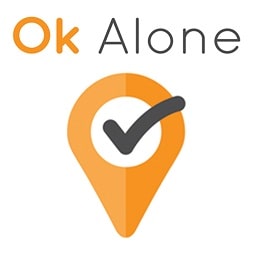Work Alone Safety: Creating a Safe Space for Fixed-Site Lone Workers
What comes to mind when you hear the term “lone worker?” An oilfield operator testing well production at an unmanned site? A biologist conducting fieldwork on a northern river? A truck driver making a delivery on an isolated stretch of road?
These types of individuals, who must often carry out their job duties in dynamic and remote places, are common examples of lone workers. Perhaps because they present the greatest work alone safety challenges due to inaccessibility and lack of communications. But lone workers aren’t always off in far-flung, ever-changing locations. They can also be “fixed site” workers, which means they work alone for prolonged periods of time at the same location, either due to the nature of their role or outside of normal business hours. This kind of worker includes:
- Gas station attendants
- Security guards
- Maintenance workers
- Cleaning attendants
- Receptionists
- Shop workers
- Teleworkers
Because these lone workers are in the same surroundings day in and day out, it’s easy to become complacent and overlook the unique safety risks associated with their fixed locations. On the same note, having a “home base” makes it easier to take control of the biggest hazard these lone workers face: their environment.
The environment of a building or other work space has a huge impact on the health and safety of lone workers. From layout, to security, to human behaviour itself, here’s what you need to know to create a safer fixed-site working environment for your lone employees.
Physical layout and design of the work space
When conducting a working alone safety assessment, it’s important to consider the layout of the rooms, equipment, and furniture. The workplace should have:
- Clear and accessible escape routes
- The reception area, for example, should not place staff in an isolated position
- As well, ensure furniture, equipment, and fittings do not protrude into walkways
- An obvious distinction between public and private areas
- A separate area for cash handling, preferably at the front of the store, where it’s visible from the outside
- Easy accessibility to commonly used items
- Equipment, such as tools and ladders, that be easily accessed and used by one person
- Safe cord management
- There should never be cords running across the floor or in any other arrangement that could lead to tripping or tangling.
Some employers even go as far as choosing pastel décor colours for a calming effect, as bright, bold colours can negatively affect the mood and perception of both employees and public visitors.
Physical security
Just because a worker is separated from their manager or another staff member doesn’t mean they’re physically alone. Many lone workers in fixed locations deal with the public on a regular basis, making them more vulnerable to security risks. To secure the workplace, be sure to include:
- Good lighting in public areas and walkways
- At least five feet of space around doorways (ensure shrubs and trees don’t create blind spots or hiding spaces)
- Locks to control staff-only areas
- Physical barriers to reduce the likelihood of violence (if applicable)
- A lone worker safety monitoring system
- A more general building-wide security system
Human behaviour
In addition to the physical aspect of the working environment, there are a few things lone workers themselves can do to create safer and more positive surroundings:
- Manage stress in a positive way
- Stressed employees are at a higher risk for safety incidents on the job, and can put other staff members at risk as well. With no one to help manage your workload, watch your back, or even talk to, working in isolation can be a trying experience. So, make sure you have someone to talk to about it, take plenty of breaks, and take advantage of any resources the employer provides.
- Wear appropriate ID
- Encourage employees to challenge strangers
- General housekeeping
- Put office equipment away immediately after use, in designated spots
- Clean up spills immediately
- Ensure waste materials are properly stored and removed regularly
When it comes to the health and safety of working alone, it’s important to review your environment regularly and revisit the risks whenever the physical layout changes. And remember that environment is just one of the many, many factors affecting isolated workers. For more insights on how to keep your staff safe, check out our other blog posts.

The Ok Alone team writes informative articles about lone working. Through our articles, we aim to educate readers on the benefits and best practices of using our lone worker app, and how Ok Alone can help mitigate risks and enhance communication between workers and monitors. Learn about other areas including legislation, risk management, and legal compliance plus lone worker features such as man down, high-risk check ins and location monitoring.

